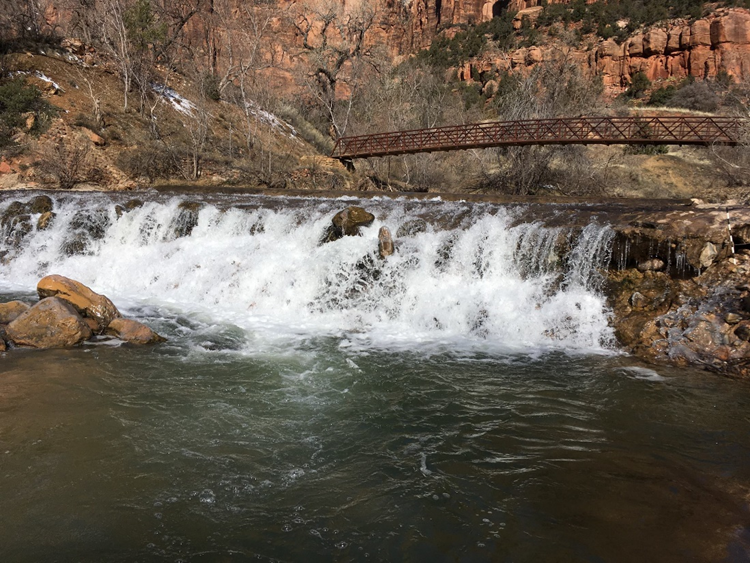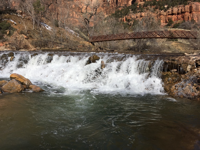$6.89 Million from Bipartisan Infrastructure Law to Protect Aquatic Species and Habitats in Montana, Wyoming and Utah - The Herald Journal


DENVER, Colo. — Five watershed-scale fish passage projects in Montana, Wyoming and Utah will receive a total of nearly $6.89 million in fiscal year 2022 funding from President Biden’s Bipartisan Infrastructure Law. The National Fish Passage Program, facilitated by the U.S. Fish and Wildlife Service (Service), supports aquatic ecosystem restoration projects and restores free-flowing waters, allowing for enhanced fish migration and protecting communities from flooding.
Today’s news from the Service’s Mountain-Prairie Region locally amplifies a Department of the Interior national announcement of 40 fish passage projects in 23 states and Puerto Rico that will receive a total of nearly $38 million in fiscal year 2022 funding from President Biden’s Bipartisan Infrastructure Law (BIL). The funds will bolster efforts to address outdated, unsafe or obsolete dams, culverts, levees and other barriers fragmenting our nation’s rivers and streams, which will help restore fish passages and aquatic connectivity.
“Across the country, millions of barriers block fish migration and put communities at higher risk of flooding,” said Secretary Deb Haaland. President Biden’s Bipartisan Infrastructure Law provides a once-in-a-generation opportunity to invest in our nation’s rivers, streams and communities and help restore habitat connectivity for aquatic species around the country.”
A number of the projects receiving funding nationally will directly address issues related to climate change and serve disadvantaged communities, while also spanning the nation geographically and addressing a wide array of diverse aquatic resource issues.
“Aquatic restoration projects funding by the Bipartisan Infrastructure Law are important examples of how nature-based projects can enable ecosystems and communities to be more resilient to climate change,” said Service Director Martha Williams. “In addition to providing benefits for fish and aquatic species, the National Fish Passage Program’s work to restore degraded and fragmented aquatic habitats decreases public safety hazards, improves infrastructure resilience, and creates jobs, stimulating the local economy.”
BIL funded fish passage projects in the Service’s Mountain-Prairie Region are located across Montana, Wyoming and Utah. A project in Helper, Utah aims to remove a defunct dam as the last of six within the town, improving not only fish passage but also public safety for boaters and anglers as part of a comprehensive river improvement plan. A collaborative project within Utah’s Zion National Park aims to remove two dams to improve fish passage and eroding infrastructure along the Virgin River. Additional work across the west will improve native cutthroat trout passage and improve diversions within the Upper Bear River watershed of Wyoming and Utah, as well as in Montana’s Upper Clark Fork and Blackfoot watersheds. “These projects are the result of years of effort by a host of individuals and entities. It’s tremendous to see their efforts acknowledged in receiving this funding,” said Bill Rice, Regional Coordinator for the National Fish Passage Program.
For more information about the National Fish Passage Program and the BIL-funded projects, please visit the Service’s Fish Passage Program website.
Enhancing wildlife corridors and habitat connectivity, including fish passage, is an early focus of the Biden-Harris administration’s America the Beautiful initiative. Today’s announcement comes on the heels of Monday’s launch of a separate $1 billion America the Beautiful Challenge that will leverage federal conservation and restoration investments with private and philanthropic contributions to accelerate locally led land, water and wildlife conservation efforts across the country.
source: https://www.hjnews.com/montpelier/6-89-million-from-bipartisan-infrastructure-law-to-protect-aquatic-species-and-habitats-in-montana/article_157d89ee-e3d5-5d55-8118-603614237999.html
Your content is great. However, if any of the content contained herein violates any rights of yours, including those of copyright, please contact us immediately by e-mail at media[@]kissrpr.com.

